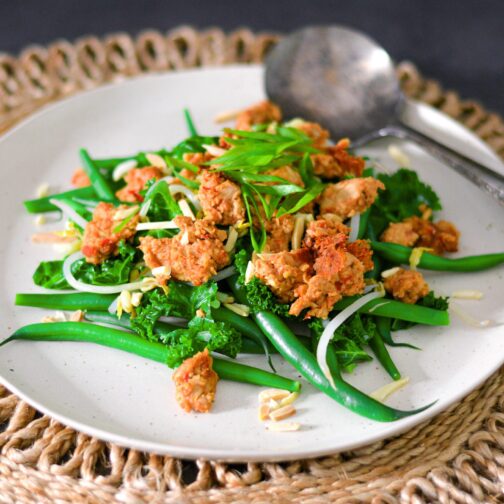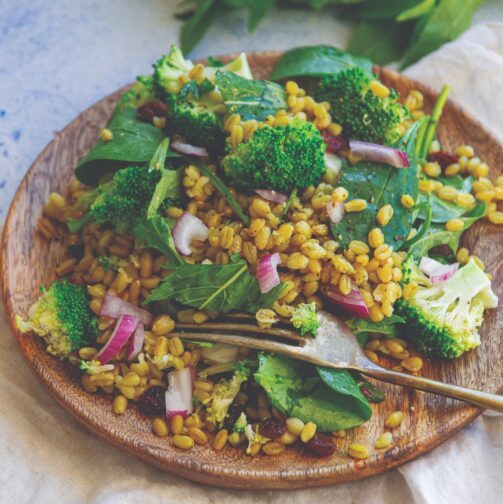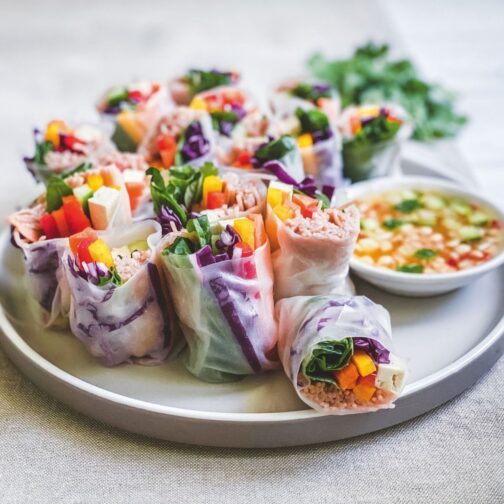
Fashion is one of the biggest offenders in the plastic pollution crisis. Here’s what you can do to eliminate the plastic from your wardrobe.
There is no escaping the fact that plastic is doing great damage to our planet. About 8 million metric tonnes of plastic end up in our oceans every year, poisoning aquatic life and destroying ecosystems, and the crisis is showing no signs of slowing down. The good news is that more people are taking note. Since videos of sea animals dying with stomachs full of plastic waste have gone viral, conscious consumers around the globe are looking to limit their impact by making plastic-free swaps in their daily lives. Many of us have cut down on plastic in our kitchens and bathrooms – but what about our wardrobes? We also need to consider that some of the plastic pollution might be coming from our clothes.
THE PLASTIC PROBLEM
Quite a large part of it does, in fact. An estimated 60 percent of all the textiles in the world are made from plastic-derived fibres such as polyester, PVC, acrylic and nylon. A big environmental problem connected to these fabrics is that they release microplastics into the waterways when washed, which contaminate the environment and are toxic to marine wildlife. Just one six-kilogram wash of polyester can shed up to 496,000 fibres, and let’s keep in mind that polyester isn’t even the worst off ending fabric. The damage coming from our wardrobes is considerable: fashion is responsible for up to 30 percent of all plastic pollution found in the oceans. From a vegan perspective, it’s also important to keep in mind that despite everything we know about the harm of plastic-based materials, we also know that animal skins are much more polluting. The 2017 Pulse of Fashion Industry Report put cow leather at the very top of its list of the most environmentally harmful materials, with silk in second place and wool in fifth. These are much higher than polyester, acrylic, nylon and other human-made synthetics.
So, learning about the harm done by synthetic clothing needn’t send you running for a wool sweater or a pair of leather shoes. But we also cannot deny that so much of what is commonly considered vegan fashion is currently made from PVC, PU, polyester and other kinds of petroleum-based materials. The big question then becomes: is it possible to have a vegan wardrobe that is also plastic-free? The answer is… possibly. Going plastic-free in your wardrobe does take more work and thought than a conventional wardrobe, regardless of whether you are vegan or not. About 65 percent of all fibres used in fashion are synthetic, the most common of which is polyester, meaning all of us are likely buying plenty of it.
PLASTIC-FREE VEGAN FASHION
The first step for a plastic-free, vegan shopper is to look into little-known labels, experimenting with new and not-so-new textiles. Some naturally derived vegan materials have been around for ages, while others are new innovations. These innovations might help us replace not only leather and other animal-derived materials, but also plastic-based fabrics.
LEATHER ALTERNATIVES
The realm of plastic-derived vegan leathers is commonly divided between PVC and PU. Greenpeace found PVC to be the most environmentally harmful form of plastic, while PU is somewhat less toxic. Neither present good options. The most eco-friendly and plastic-free vegan choice is probably cork, which has been used for decades. Cork is biodegradable and recyclable – but the coolest thing about it is that it regenerates itself. The cork is taken off the tree without having to cut the tree down, and then it grows back! Marketplaces like Velvety offer beautiful cork bags, plus other innovations like leaf leather. French label Ovide makes cork apparel, such as biker jackets. And for even more innovative options, Polish brand Alexandra K offers bags and accessories in plastic-free apple leather and ‘Freedom Leather’, made from PVC- and PU-free silicone.
WOOL ALTERNATIVES
Much too often, the ‘wool or no wool’ debate is mistakenly framed in an outdated ‘wool vs plastic’ mindset. This is limiting and misleading, considering wool can easily be replaced with materials such as hemp, organic cotton, and recycled fibres. Tencel, also known as Lyocell, is an innovative, eco-friendly material made from wood cellulose. It is produced using a closed-loop technology, meaning that the water and chemicals used in the process are re-used to minimise waste as much as possible. Outer wear brand Hemp Tailor has a range of hemp and organic cotton-based vegan knitwear. Eco-fashion pioneers People Tree often feature knits in organic cotton – and when it comes to cotton, organic really does make a difference, so ethical shoppers should aim to choose organic cotton when they can.
SILK ALTERNATIVES
Silk, which causes many silkworms to lose their life by being boiled alive in their cocoons, can be replaced with natural materials including linen and Tencel, as well as ramie, which comes from a nettle plant and is biodegradable. Italian fashion house Balossa dedicated an entire collection to ramie. Cupro, a regenerated cellulose made from cotton waste is another eco-friendly option, and is machine washable (unlike silk) and biodegrades easily. London-based label Rakha offers a range of eco-friendly designs in cupro.
LIFESPAN BEFORE LANDFILL
Of course, one of the most planet-friendly ways to shop is to embrace second-hand fashion. There is not a more ethical way to consume fashion than to use what is already in circulation, including plastic-derived materials. No matter how ethically produced, no new garments or objects can be as kind to the planet as ones that are already in existence. And since the world is already overflowing with polyester, the best thing we can do is give some of it a longer lifespan and avoid it going into landfill. Many of us have swapped out our plastic toothbrushes for bamboo, replaced our plastic bottles with glass ones, and cut down on single-use plastic. These are all important steps to take. But it’s also crucial that we take a look into our wardrobes and face facts. Fashion is a plastic pollution offender. To protect natural habitats and animal populations from plastic pollution, we need to limit the damage caused by our fashion.

























